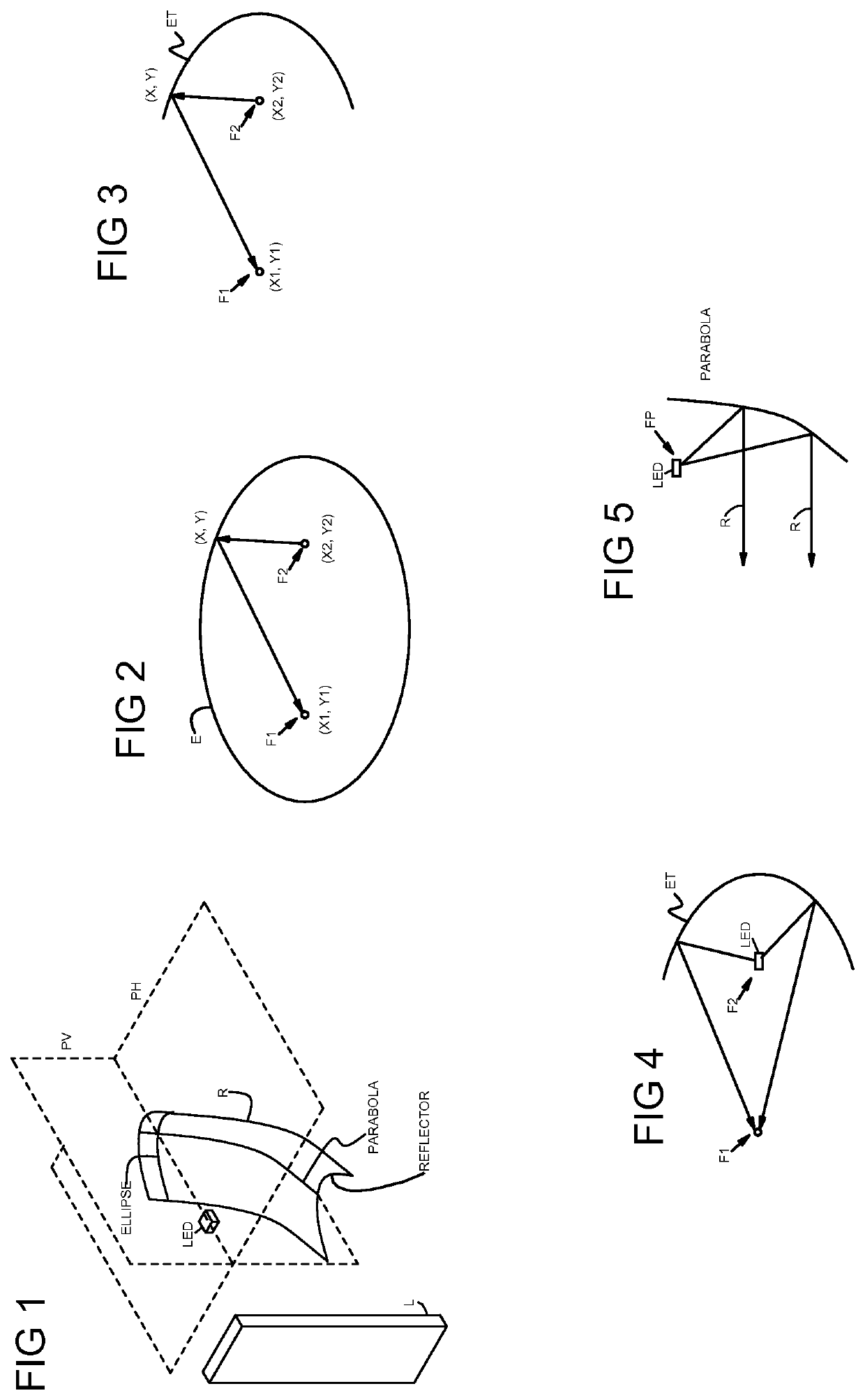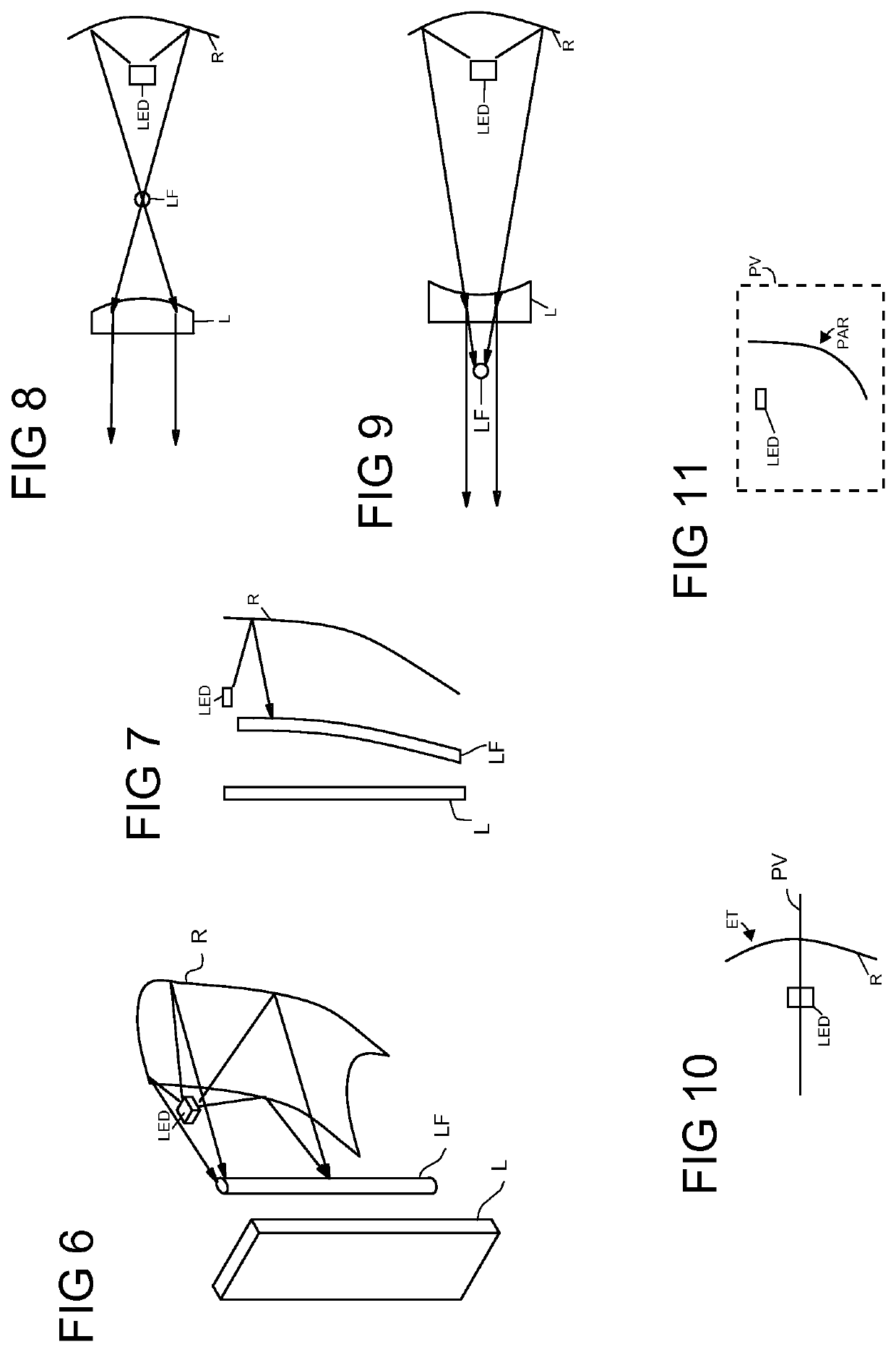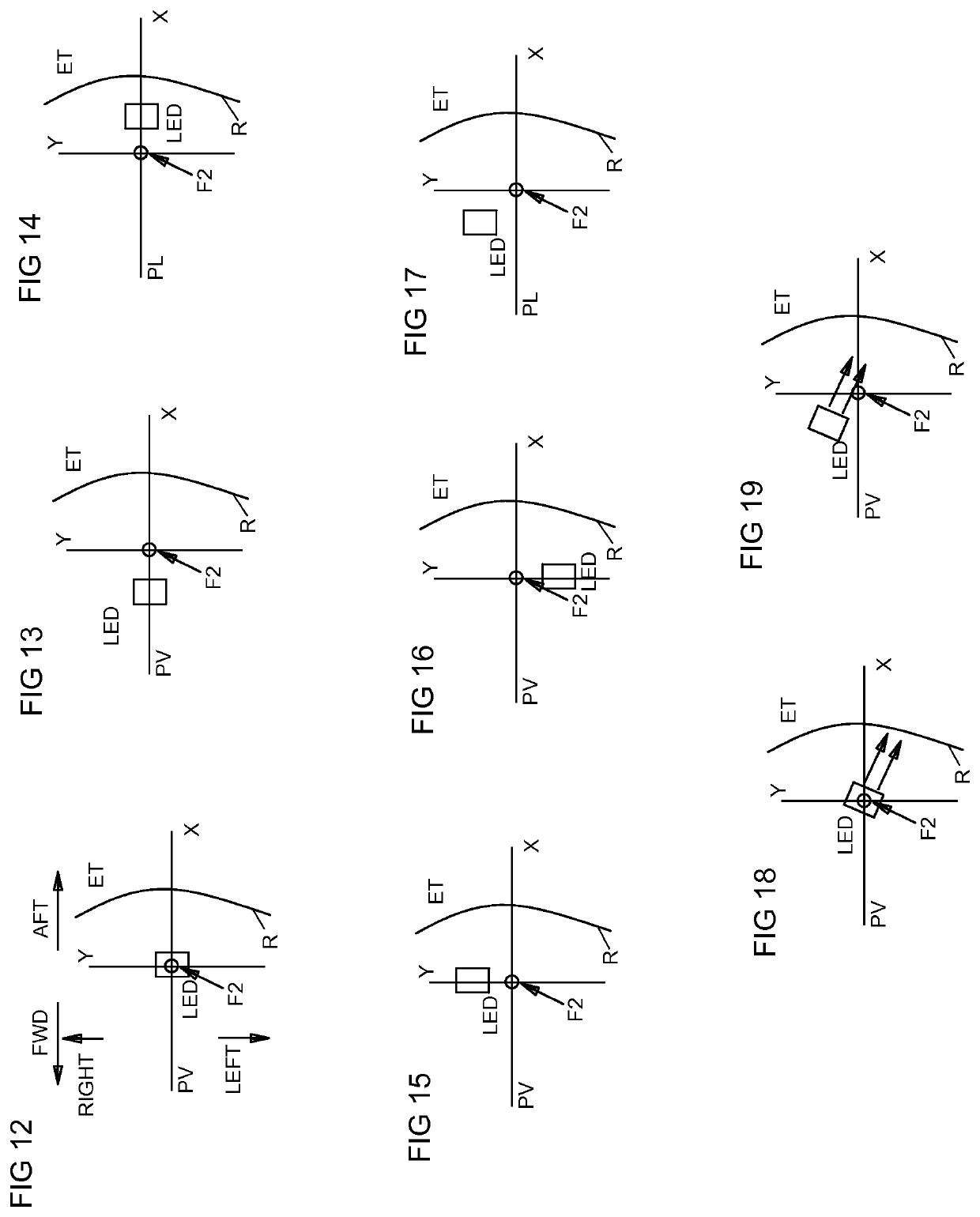Thin aspect lighting system with cutoff
a technology of forward lighting and thin aspect, applied in the field of thin aspect forward lighting system with cutoff, can solve the problems of difficult control, difficult modeling of beam photometry, and general excessive thickness of beams
- Summary
- Abstract
- Description
- Claims
- Application Information
AI Technical Summary
Benefits of technology
Problems solved by technology
Method used
Image
Examples
Embodiment Construction
[0142]The invention improves over various prior art devices, including those shown in U.S. Pat. No. 7,980,742, to Albou, issued Jul. 19, 2011; U.S. Pat. No. 7,121,705 to Albou, issued October, 2006; U.S. Pat. No. 7,390,112, to Leleve, issued June, 2008; and U.S. Pat. No. 7,524,095, to Albou, issued April 2009, all of which are incorporated herein by reference and made a part hereof.
[0143]The invention concerns a “thin aspect” headlight or other lighting and / or signaling devices, hereinafter collectively referred to as a lighting device, for vehicles. The “aspect” in “thin aspect” refers to “aspect ratio,” which is the ratio of height H to width W, or H / W. Thus, a thin aspect ratio refers to a headlight which is tall and narrow. However, despite the fact that the thin aspect light is tall and narrow, the lighting device provides a beam pattern that conforms to SAE and / or ECE standards. The beam is typically short and wide. That is, a thin aspect lighting device, which is tall and nar...
PUM
 Login to View More
Login to View More Abstract
Description
Claims
Application Information
 Login to View More
Login to View More - R&D
- Intellectual Property
- Life Sciences
- Materials
- Tech Scout
- Unparalleled Data Quality
- Higher Quality Content
- 60% Fewer Hallucinations
Browse by: Latest US Patents, China's latest patents, Technical Efficacy Thesaurus, Application Domain, Technology Topic, Popular Technical Reports.
© 2025 PatSnap. All rights reserved.Legal|Privacy policy|Modern Slavery Act Transparency Statement|Sitemap|About US| Contact US: help@patsnap.com



